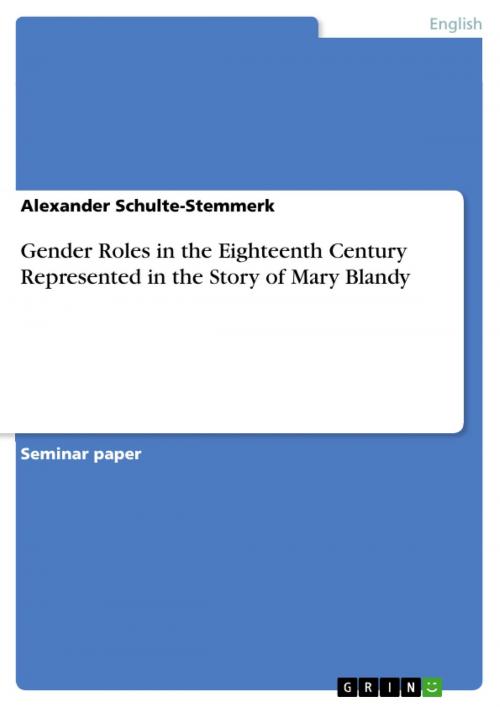Gender Roles in the Eighteenth Century Represented in the Story of Mary Blandy
Nonfiction, Entertainment, Drama, Anthologies| Author: | Alexander Schulte-Stemmerk | ISBN: | 9783638467919 |
| Publisher: | GRIN Publishing | Publication: | February 10, 2006 |
| Imprint: | GRIN Publishing | Language: | English |
| Author: | Alexander Schulte-Stemmerk |
| ISBN: | 9783638467919 |
| Publisher: | GRIN Publishing |
| Publication: | February 10, 2006 |
| Imprint: | GRIN Publishing |
| Language: | English |
Seminar paper from the year 2005 in the subject American Studies - Literature, grade: 2,3, University of Passau, 8 entries in the bibliography, language: English, abstract: The Newgate Calendar,first published during the eighteenth century, was one of the books, along with the bible, most likely to be found in any English home at this period. It contains a large number of eighteenth century trials and is based on the remarkable book calledThe Malefactor´s Register or New Newgate and Tyburn Calendar. At this time the moving ideas of criminal legislation were retribution and deterrence, and the punishment of every felony was death. In this manner the primary intention ofThe Newgate Calendarwas to inculcate the principles of the right living and to teach the contemporary moral values according to the roles intended for the different sexes. Particularly the children were encouraged to read it because of the reasons mentioned above. One of the most extraordinary cases recorded in these volumes is the case of Mary Blandy who was found guilty of parricide and sentenced to death in 1752. Her trial generated enormous public interest with over thirty contemporary pamphlets produced analyzing her character and the trial.1The aim of this essay is to show on the basis of the story about Mary Blandy the predefined role of women in the eighteenth-century and to give an overview about gender roles in general at this time. I will examine the relationship between the female accused and the male leading characters of Sir Francis Blandy and Captain William Henry Cranstoun. This essay is divided into the introduction, a brief summary of the story, an analysis of Mary Blandy´ s relationship to her father and to William Cranstoun, an account of the gender roles in the eighteenth century, whereupon I put the main emphasis on the role of the women, and the conclusion.
Seminar paper from the year 2005 in the subject American Studies - Literature, grade: 2,3, University of Passau, 8 entries in the bibliography, language: English, abstract: The Newgate Calendar,first published during the eighteenth century, was one of the books, along with the bible, most likely to be found in any English home at this period. It contains a large number of eighteenth century trials and is based on the remarkable book calledThe Malefactor´s Register or New Newgate and Tyburn Calendar. At this time the moving ideas of criminal legislation were retribution and deterrence, and the punishment of every felony was death. In this manner the primary intention ofThe Newgate Calendarwas to inculcate the principles of the right living and to teach the contemporary moral values according to the roles intended for the different sexes. Particularly the children were encouraged to read it because of the reasons mentioned above. One of the most extraordinary cases recorded in these volumes is the case of Mary Blandy who was found guilty of parricide and sentenced to death in 1752. Her trial generated enormous public interest with over thirty contemporary pamphlets produced analyzing her character and the trial.1The aim of this essay is to show on the basis of the story about Mary Blandy the predefined role of women in the eighteenth-century and to give an overview about gender roles in general at this time. I will examine the relationship between the female accused and the male leading characters of Sir Francis Blandy and Captain William Henry Cranstoun. This essay is divided into the introduction, a brief summary of the story, an analysis of Mary Blandy´ s relationship to her father and to William Cranstoun, an account of the gender roles in the eighteenth century, whereupon I put the main emphasis on the role of the women, and the conclusion.















